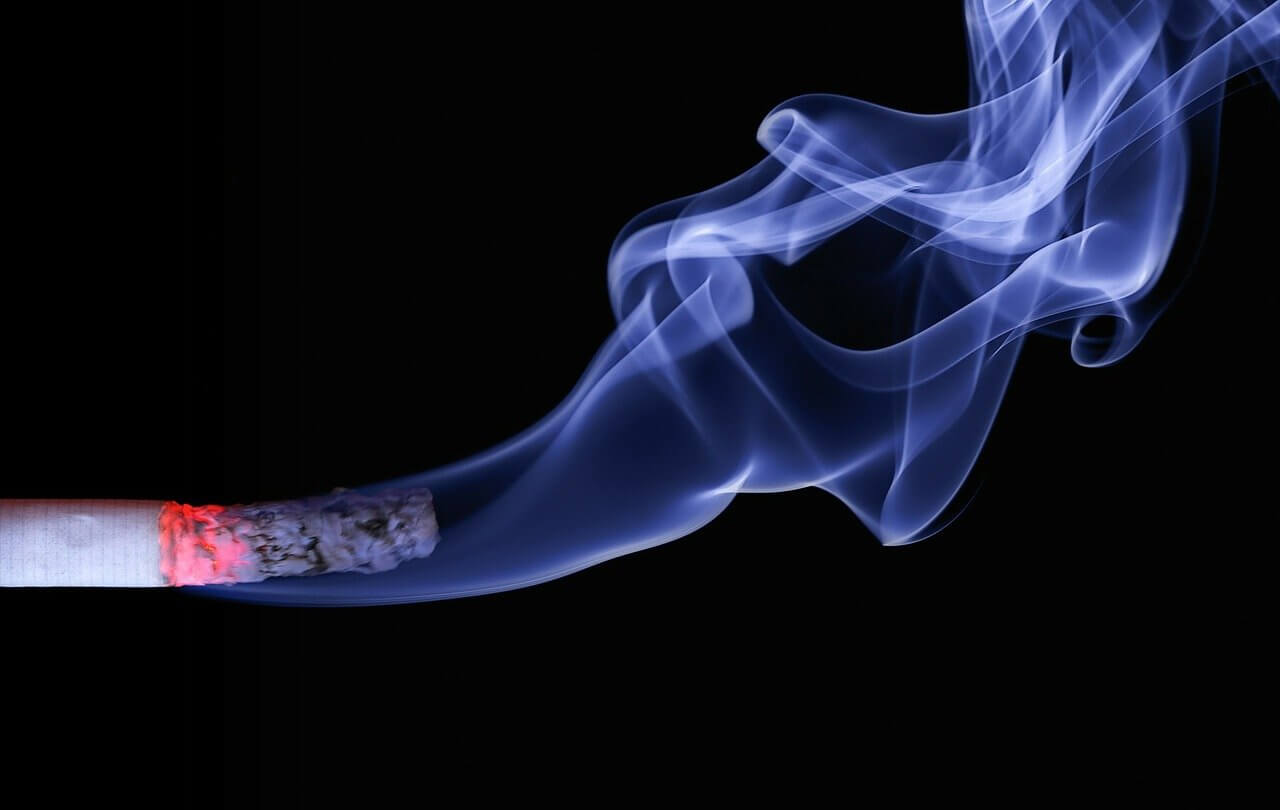Lung Cancer Treatment

Lung cancer treatment varies according to many criteria. Your age, health status, the type of cancer developed, its extension, prognosis, and your preferences all play a role when choosing the course of therapies. Treatment aims to kill the cancer, control it, prevent it from spreading, reduce symptoms, and give patients a better quality of life.
Combination therapies are generally preferred. That is, those that use two or more options in the process. Today, we’ll focus on the standard treatment of lung cancer. In other words, the alternatives that are used throughout the world as a procedure to cope with the disease. There are dozens of ongoing clinical trials that are emerging as possible options in the future.
Surgery

According to the American Lung Association, surgery’s the best treatment option when the cancer is localized and hasn’t spread to other parts of the body.
It’s often chosen when early stage non-small cell lung cancer or carcinoid tumors have been found in a single lung. Following the National Cancer Institute, these are the available options:
- Wedge resection: This consists of removing the tumor and part of the tissue that surrounds it. When the tissue extraction must be greater than expected, it’s called segmental resection surgery. Researchers recommend the latter because of its higher survival rate after the intervention.
- Lobectomy: This is the standard procedure to treat lung cancer with surgery. During the procedure, one of the lung’s lobes is removed (the right has three, the left two). When it has to be done in both lungs, it’s called a bilobectomy.
- Sleeve resection: Also known as sleeve lobectomy. In this case, the lobe and part of the bronchus are removed. Studies recommend its application, whenever possible, to avoid pneumonectomy.
- Pneumonectomy: This refers to the intervention in which the entire lung is removed. Doctors choose this course of action when the cancer can’t be treated with the previous options or is located in the center of the lung.
Surgery may be accompanied by chemotherapy or radiation therapy sessions to eliminate traces of cancer cells in the body. This is known as adjuvant therapy and is used to reduce the chances that the cancer will come back.
Chemotherapy
As Johns Hopkins Medicine points out, chemotherapy treatment for lung cancer aims to destroy tumor cells throughout the body. It can be used to shrink the tumor, prevent it from spreading, or relieve the patient’s symptoms. It is used before or after surgery, although it can also be used as the only main therapy.
Its administration is based on cycles. Each cycle has a recovery period. During the process, healthy cells can be destroyed, resulting in side effects such as hair loss, suppression of the immune system, and fatigue. To reduce complications, the specialist can use a regional or specific therapy, which focuses only on the affected area.
Some of the drugs used during chemotherapy in lung cancer patients are Platinol (cisplatin), Gemzar (gemcitabine), Taxotere (docetaxel), and Taxol (paclitaxel), among others.
Radiation
Radiation therapy uses high-energy x-rays to prevent cancer cells from growing or to kill them completely. We can divide it into external and internal. In the latter case, radioactive implants are used within the cancerous tumor. The first option, external radiation, is the one most used by specialists. We can highlight the following side effects after its application:
- Fatigue
- Cough
- Mild skin reactions
- Throat pain
- Inflammation of the lungs
Researchers support its use in the early stages of cancer, although it can also be used when it is advanced. The therapy is painless and lasts on average 15 minutes.
Targeted therapies
As we briefly mentioned in the chemotherapy section, targeted therapies are being used with increasing frequency. This type of treatment reduces side effects and focuses efforts on certain biomarkers of malignant cells.
In simple terms, some tumors have features in their structure (DNA mutations, additions, deletions, or rearrangements) that can be identified through laboratory tests. When they’re identified, special treatments are chosen that attack these characteristics.
The biomarkers identified so far that can be treated are EGFR, ALK, ROS-1, RET, MET, NTRK, and BRAF V600E. This is an open field of medicine. Therefore, in the coming years, new useful markers for different therapies will be discovered.
Immunotherapy
Immunotherapy is a novel treatment for lung cancer. Studies welcome its application, as well as a therapy that may report increasingly promising results in the future. In simple terms, it consists of the administration of drugs that activate the body’s defenses to deal with malignant cells.
The type of immunotherapy used in lung cancer focuses on vaccines, immune checkpoint inhibitors, and adoptive T-cell therapies. It can be used alone or in conjunction with chemotherapy and in any stage of cancer progression.
Changes in lifestyle

It goes without saying that if you’re a smoker, you should stop or reduce the habit after the diagnosis of the disease. Studies consider quicking smoking to be an integral part of lung cancer treatment. Keep in mind that smoking can worsen the symptoms of cancer or those of the sequelae that therapies produce. There should be no negotiating when it comes to this point.
As with other diseases, the use of alternative treatments has become popular. Some are based on traditional knowledge, such as naturopathy or Ayurvedic medicine.
Keep in mind that, if you want to try these, you must report it to your specialist. Also, don’t abandon your main treatment and maintain objective expectations regarding any alternative treatment that promises to cure the cancer. Yes, some habits designed to help you relax can offer benefits. For instance:
- Meditation
- Yoga
- Tai Chi
- Massage
- Acupuncture
These practices won’t cure cancer, but they can be an ally when it comes to improving the quality of life physically and emotionally. In any case, the important thing is that you trust the therapies planned by the doctor who’s treating the condition.
Lung cancer treatment varies according to many criteria. Your age, health status, the type of cancer developed, its extension, prognosis, and your preferences all play a role when choosing the course of therapies. Treatment aims to kill the cancer, control it, prevent it from spreading, reduce symptoms, and give patients a better quality of life.
Combination therapies are generally preferred. That is, those that use two or more options in the process. Today, we’ll focus on the standard treatment of lung cancer. In other words, the alternatives that are used throughout the world as a procedure to cope with the disease. There are dozens of ongoing clinical trials that are emerging as possible options in the future.
Surgery

According to the American Lung Association, surgery’s the best treatment option when the cancer is localized and hasn’t spread to other parts of the body.
It’s often chosen when early stage non-small cell lung cancer or carcinoid tumors have been found in a single lung. Following the National Cancer Institute, these are the available options:
- Wedge resection: This consists of removing the tumor and part of the tissue that surrounds it. When the tissue extraction must be greater than expected, it’s called segmental resection surgery. Researchers recommend the latter because of its higher survival rate after the intervention.
- Lobectomy: This is the standard procedure to treat lung cancer with surgery. During the procedure, one of the lung’s lobes is removed (the right has three, the left two). When it has to be done in both lungs, it’s called a bilobectomy.
- Sleeve resection: Also known as sleeve lobectomy. In this case, the lobe and part of the bronchus are removed. Studies recommend its application, whenever possible, to avoid pneumonectomy.
- Pneumonectomy: This refers to the intervention in which the entire lung is removed. Doctors choose this course of action when the cancer can’t be treated with the previous options or is located in the center of the lung.
Surgery may be accompanied by chemotherapy or radiation therapy sessions to eliminate traces of cancer cells in the body. This is known as adjuvant therapy and is used to reduce the chances that the cancer will come back.
Chemotherapy
As Johns Hopkins Medicine points out, chemotherapy treatment for lung cancer aims to destroy tumor cells throughout the body. It can be used to shrink the tumor, prevent it from spreading, or relieve the patient’s symptoms. It is used before or after surgery, although it can also be used as the only main therapy.
Its administration is based on cycles. Each cycle has a recovery period. During the process, healthy cells can be destroyed, resulting in side effects such as hair loss, suppression of the immune system, and fatigue. To reduce complications, the specialist can use a regional or specific therapy, which focuses only on the affected area.
Some of the drugs used during chemotherapy in lung cancer patients are Platinol (cisplatin), Gemzar (gemcitabine), Taxotere (docetaxel), and Taxol (paclitaxel), among others.
Radiation
Radiation therapy uses high-energy x-rays to prevent cancer cells from growing or to kill them completely. We can divide it into external and internal. In the latter case, radioactive implants are used within the cancerous tumor. The first option, external radiation, is the one most used by specialists. We can highlight the following side effects after its application:
- Fatigue
- Cough
- Mild skin reactions
- Throat pain
- Inflammation of the lungs
Researchers support its use in the early stages of cancer, although it can also be used when it is advanced. The therapy is painless and lasts on average 15 minutes.
Targeted therapies
As we briefly mentioned in the chemotherapy section, targeted therapies are being used with increasing frequency. This type of treatment reduces side effects and focuses efforts on certain biomarkers of malignant cells.
In simple terms, some tumors have features in their structure (DNA mutations, additions, deletions, or rearrangements) that can be identified through laboratory tests. When they’re identified, special treatments are chosen that attack these characteristics.
The biomarkers identified so far that can be treated are EGFR, ALK, ROS-1, RET, MET, NTRK, and BRAF V600E. This is an open field of medicine. Therefore, in the coming years, new useful markers for different therapies will be discovered.
Immunotherapy
Immunotherapy is a novel treatment for lung cancer. Studies welcome its application, as well as a therapy that may report increasingly promising results in the future. In simple terms, it consists of the administration of drugs that activate the body’s defenses to deal with malignant cells.
The type of immunotherapy used in lung cancer focuses on vaccines, immune checkpoint inhibitors, and adoptive T-cell therapies. It can be used alone or in conjunction with chemotherapy and in any stage of cancer progression.
Changes in lifestyle

It goes without saying that if you’re a smoker, you should stop or reduce the habit after the diagnosis of the disease. Studies consider quicking smoking to be an integral part of lung cancer treatment. Keep in mind that smoking can worsen the symptoms of cancer or those of the sequelae that therapies produce. There should be no negotiating when it comes to this point.
As with other diseases, the use of alternative treatments has become popular. Some are based on traditional knowledge, such as naturopathy or Ayurvedic medicine.
Keep in mind that, if you want to try these, you must report it to your specialist. Also, don’t abandon your main treatment and maintain objective expectations regarding any alternative treatment that promises to cure the cancer. Yes, some habits designed to help you relax can offer benefits. For instance:
- Meditation
- Yoga
- Tai Chi
- Massage
- Acupuncture
These practices won’t cure cancer, but they can be an ally when it comes to improving the quality of life physically and emotionally. In any case, the important thing is that you trust the therapies planned by the doctor who’s treating the condition.
- Cataldo JK, Dubey S, Prochaska JJ. Smoking cessation: an integral part of lung cancer treatment. 2010;78(5-6):289-301.
- Doroshow DB, Sanmamed MF, Hastings K, Politi K, Rimm DL, Chen L, Melero I, Schalper KA, Herbst RS. Immunotherapy in Non-Small Cell Lung Cancer: Facts and Hopes. Clin Cancer Res. 2019 Aug 1;25(15):4592-4602.
- Parashar, B., Arora, S., & Wernicke, A. G. Radiation therapy for early stage lung cancer. In Seminars in interventional radiology. 2013; 30 (02): 185-190.
- Smith CB, Swanson SJ, Mhango G, Wisnivesky JP. Survival after segmentectomy and wedge resection in stage I non-small-cell lung cancer. J Thorac Oncol. 2013 Jan;8(1):73-8.
- Tronc F, Grégoire J, Rouleau J, Deslauriers J. Long-term results of sleeve lobectomy for lung cancer. Eur J Cardiothorac Surg. 2000 May;17(5):550-6.
Este texto se ofrece únicamente con propósitos informativos y no reemplaza la consulta con un profesional. Ante dudas, consulta a tu especialista.







